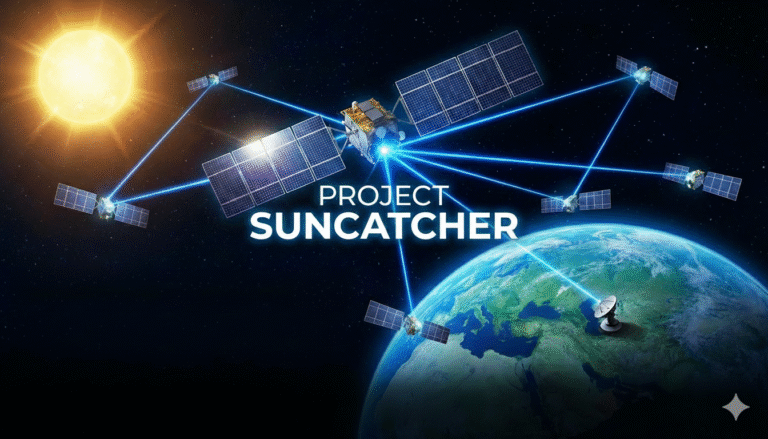The telecommunications industry has undergone tremendous transformation since the advent of 1G in the 1980s. Each successive generation has introduced game-changing capabilities, from voice-only analog systems to the ultra-fast, data-driven world of 5G. As we stand at the frontier of 6G development, expectations are not just about faster speeds but about reshaping how society connects, communicates, and computes. 6G promises a paradigm shift that transcends conventional telecommunications, enabling truly immersive experiences, intelligent automation, and seamless interconnectivity between the physical, digital, and biological worlds.
What is 6G?
6G (sixth-generation wireless) is the next step in mobile telecommunications, envisioned to build on the foundations laid by 5G. While it is still in the research and conceptual stage, early projections anticipate its rollout around 2030. Unlike its predecessors, 6G aims to integrate advanced technologies such as Artificial Intelligence (AI), machine learning, terahertz (THz) communication, and quantum computing to deliver speeds over 100 Gbps and ultra-low latency of under 1 millisecond.
Key Features of 6G
- Extreme Data Speeds: 6G is expected to reach speeds up to 100 times faster than 5G, supporting data rates exceeding 100 Gbps.
- Ultra-low Latency: Latency could reduce to under 0.1 milliseconds, enabling real-time responses for critical applications like remote surgery and autonomous driving.
- AI-Driven Networks: Networks will be self-optimizing and self-healing, utilizing AI to manage traffic, detect faults, and ensure uninterrupted service.
- Enhanced Spectral Efficiency: By leveraging the THz spectrum, 6G can accommodate the growing number of connected devices and data consumption.
- Integration with Space-Air-Ground-Sea (SAGS) Communications: 6G aims to provide ubiquitous connectivity, including in remote areas, through the integration of satellite and aerial networks.
- Energy Efficiency and Sustainability: With the climate crisis in focus, 6G aims to be significantly more energy-efficient, utilizing green AI and sustainable practices in hardware design and deployment.
Beyond Speed: Societal and Technological Transformations
1. Digital Twins and Mixed Reality
6G will enable high-fidelity digital twins of physical systems in real-time, transforming industries like healthcare, manufacturing, and urban planning. Mixed Reality (MR) experiences will become commonplace, offering lifelike virtual collaboration, remote education, and immersive entertainment.
2. AI Integration for Smarter Networks
Unlike 5G, where AI is an add-on, 6G will be built with AI at its core. AI will optimize network performance, user experience, and even manage energy use. This could lead to the emergence of “cognitive networks” that learn from user behavior and environmental data to offer personalized and adaptive services.
3. Advanced Telepresence and Holography
With ultra-fast and low-latency connections, telepresence and holographic communication will become viable. Imagine attending a business meeting as a life-size hologram or interacting with loved ones in a lifelike virtual environment.
4. Smart Cities and Urban Automation
6G will be the backbone of next-gen smart cities, enabling intelligent traffic systems, automated public transport, energy-efficient buildings, and real-time environmental monitoring.
5. Enhanced Cyber-Physical Systems
From self-driving cars to industrial automation, 6G will connect and coordinate complex cyber-physical systems in real-time, boosting safety, efficiency, and innovation.
Global Research and Development Initiatives
Governments, academia, and industry leaders are investing heavily in 6G research:
- China: Initiated early 6G research in 2019 and launched a 6G test satellite.
- South Korea: Samsung and LG are developing THz components and AI-driven network architectures.
- United States: The Next G Alliance, spearheaded by ATIS, is coordinating efforts among key players like Apple, Google, and AT&T.
- Europe: The Hexa-X project, funded by the EU, aims to define 6G use cases, architecture, and enabling technologies.
Challenges Ahead
- Technological Barriers: THz wave propagation suffers from high path loss and atmospheric absorption, requiring breakthroughs in antenna design and signal processing.
- Regulatory and Spectrum Allocation: Regulatory frameworks and spectrum availability must be aligned globally for successful 6G deployment.
- Cybersecurity: With increased complexity and interconnectivity, new threats emerge. AI-driven security protocols and quantum-resistant encryption will be crucial.
- Cost and Infrastructure: Building 6G infrastructure will be expensive, and operators must balance investment with commercial viability.
6G in Emerging Markets
While 6G may first appear in developed economies, it holds immense potential for emerging markets. With smart infrastructure and digital inclusion, 6G can bridge gaps in education, healthcare, and economic development.
Use Cases Across Industries
- Healthcare: Remote surgery, AI diagnostics, and connected healthcare ecosystems.
- Agriculture: Precision farming through real-time environmental monitoring.
- Manufacturing: Smart factories with AI-driven automation and predictive maintenance.
- Education: Immersive and personalized learning experiences.
- Transportation: Fully autonomous and connected vehicles.
Conclusion: A Future Built on 6G
6G is not merely an evolution in mobile broadband—it is a revolution that will redefine our digital existence. By seamlessly integrating AI, THz communication, and immersive technologies, 6G will empower societies, revolutionize industries, and pave the way for a hyperconnected, intelligent world. However, realizing this vision will require global cooperation, sustainable innovation, and a proactive approach to privacy, security, and ethical concerns.
As we move toward 2030 and beyond, one thing is certain: 6G will be the foundation of a new era in telecommunications—one that goes far beyond speed.









+ There are no comments
Add yours